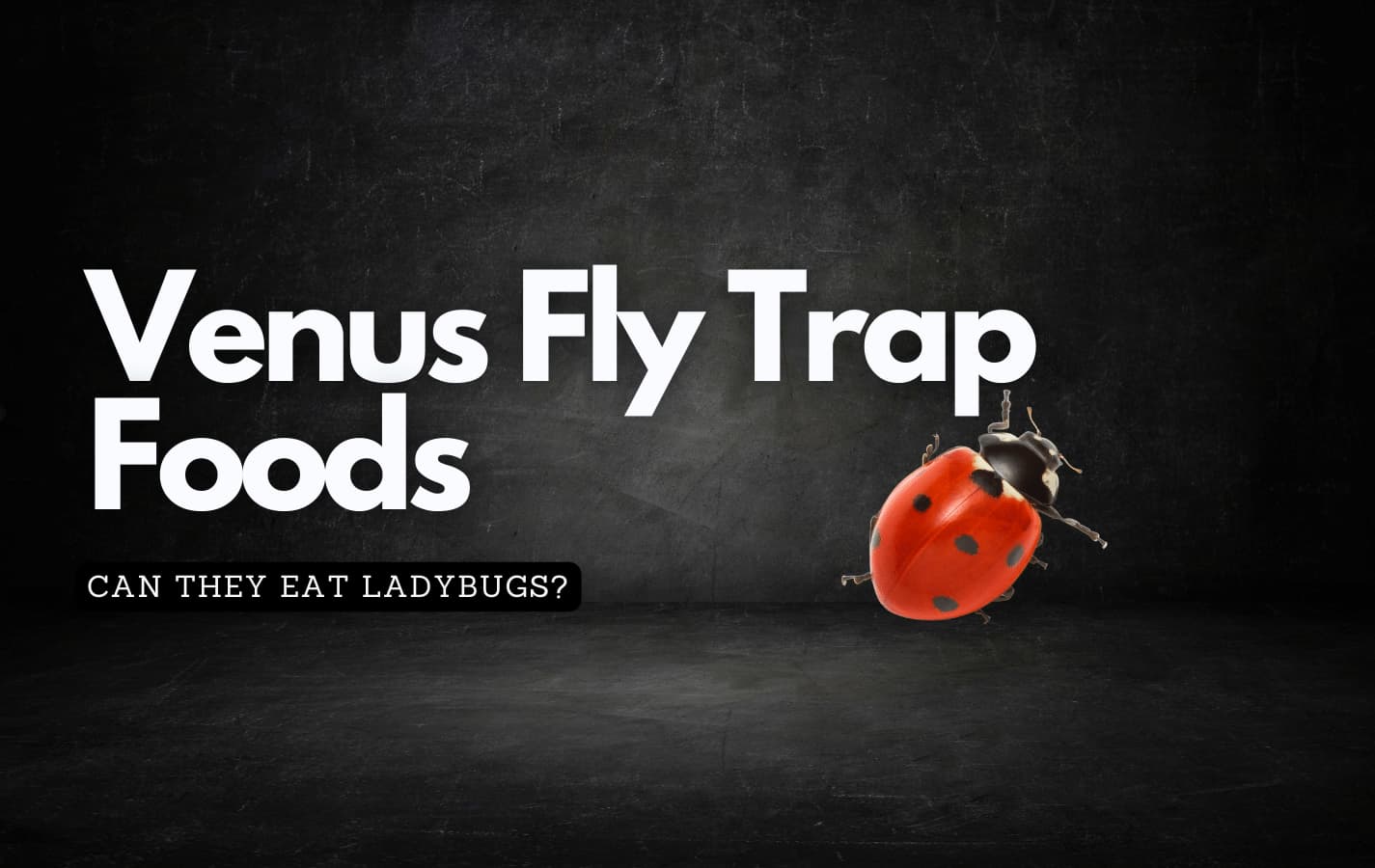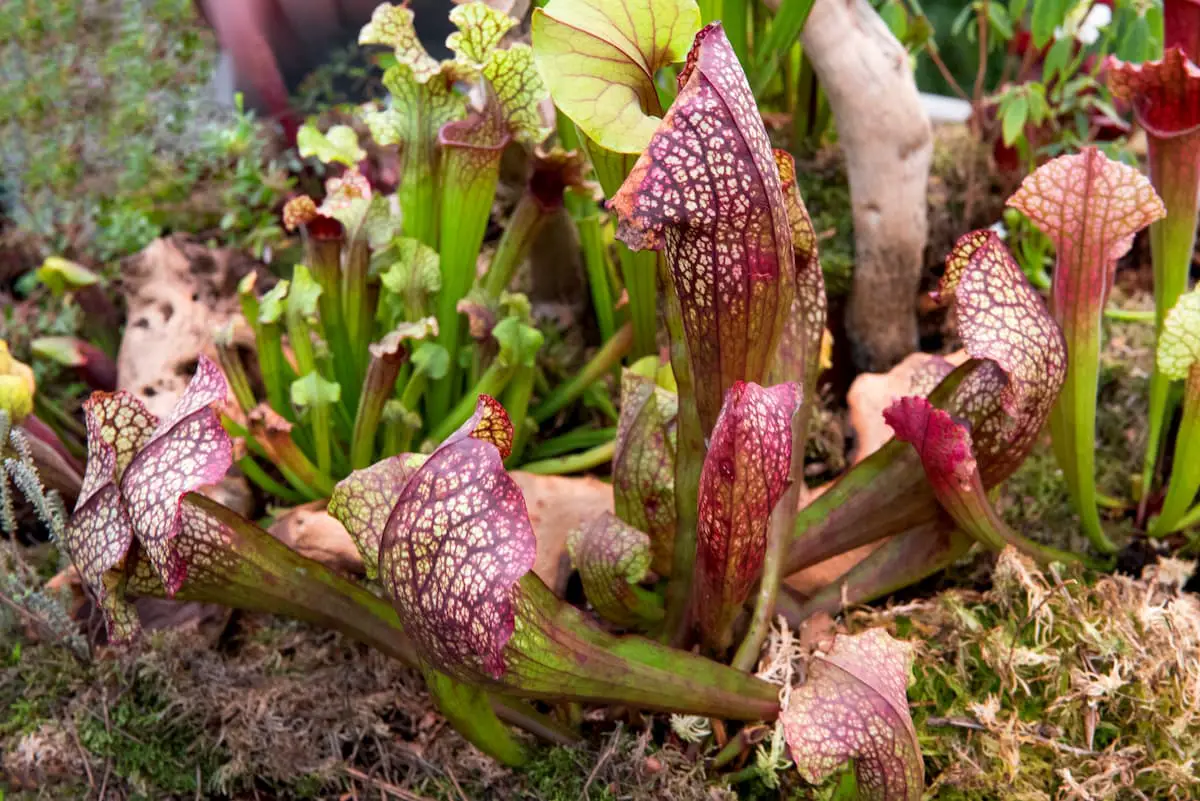Are Venus fly traps capable of consuming ladybugs? This question has sparked curiosity among plant enthusiasts and insect lovers alike.
Venus fly traps are carnivorous plants known for their ability to capture and digest insects, but do they include ladybugs in their diet?
Ladybugs are often considered as beneficial insects in gardens as they feed on harmful pests like aphids. However, they may also fall prey to other predators such as birds, spiders, and mantids.
The idea of Venus fly traps eating ladybugs may seem surprising, but it is not uncommon for carnivorous plants to consume a variety of insects.
In this article, we will explore whether or not Venus fly traps eat ladybugs and shed light on the fascinating world of these unique plants.
Venus Fly Traps: A Carnivorous Plant
Carnivorous plants are a unique and fascinating group of species that derive their nutrients from consuming insects. These insectivorous plants have adapted to low nutrient environments by developing mechanisms, such as sticky traps, to capture their prey.
One well-known example of a carnivorous plant is the Venus Fly Trap. The Venus Fly Trap, also known as Dionaea muscipula, is native to the wetlands of North and South Carolina in the United States. It is a small plant with modified leaves that form two hinged lobes lined with sensitive trigger hairs.
When an insect lands on the trigger hairs, it causes the lobes to snap shut within milliseconds, trapping the insect inside. Once trapped, the Venus Fly Trap secretes digestive enzymes that dissolve the insect into nutrients that can be absorbed by the plant.
While small insects such as gnats and flies are commonly consumed by this species, larger insects such as ladybugs may not be suitable for consumption due to their size and hard exoskeletons.
Are Ladybugs On The Menu?
Ah, the age-old question of whether or not ladybugs are a delicacy for Venus fly traps. It’s a topic that has been debated by scientists, gardeners, and bug enthusiasts alike.
But let’s be real here, who wouldn’t want to see those cute little carnivorous plants gobble up a ladybug or two? It’s like watching a miniature horror movie play out in front of your very eyes.
Now, before we go any further, let’s just take a moment to appreciate the ladybug population.
These little critters are not only adorable with their bright red shells and black polka dots but they’re also incredibly helpful when it comes to controlling pests in our gardens.
So, the thought of them being on the menu for Venus fly traps is enough to make anyone cringe.
But alas, the truth must be told. According to research, while Venus fly traps do have a diverse prey preference including ants, spiders, and even small frogs (yikes!), ladybugs don’t seem to be high up on their list.
In fact, studies have shown that Venus fly traps are more attracted to insects that are rich in nitrogen such as flies and beetles.
- Ladybugs may not be on the menu for Venus fly traps but they still play an important role in maintaining a healthy ecosystem.
- It’s important for gardeners and bug enthusiasts alike to educate themselves on the eating habits of different species in order to promote biodiversity.
- While it may be entertaining to watch Venus fly traps devour insects, it’s important to remember that these plants rely on them as their primary source of nutrients.
Exploring the Eating Habits of Venus Fly Traps
So there you have it folks, while ladybugs may not be a favorite snack for Venus fly traps they certainly have their own unique set of prey preferences. But what exactly makes these plants so fascinating?
In the next section, we’ll take a closer look at the eating habits of Venus fly traps and what makes them such efficient predators.
Exploring The Eating Habits Of Venus Fly Traps
Venus Fly Traps are a fascinating plant species that have evolved to feed on insects. They are native to bogs and swamps in the southeastern United States, where they have adapted to survive in nutrient-poor soil.
Their unique ability to capture and digest insects has made them popular among gardeners, who often cultivate them for their insect-eating habits.
Venus Fly Traps are carnivorous plants that primarily feed on small insects like flies, ants, and spiders. However, ladybugs are not typically part of their diet.
While Venus Fly Traps can technically eat ladybugs, they do not actively seek them out as prey. Instead, they rely on their built-in traps to catch smaller insects that fly or crawl into their vicinity.
If you’re interested in cultivating Venus Fly Traps, it’s important to understand their eating habits and natural habitats. These plants require specific growing conditions to thrive, including ample sunlight, high humidity levels, and well-draining soil.
You can create a suitable environment for your Venus Fly Trap by mimicking its natural habitat with a terrarium or greenhouse setup.
| Positive Aspects | Negative Aspects |
|---|---|
| Natural pest control | Sensitive to fertilizers |
| Low maintenance | Not ideal for novice gardeners |
| Unique aesthetic appeal | Requires specialized care |
Overall, Venus Fly Traps make great additions to any garden or indoor space due to their unique characteristics and insect-eating abilities.
By understanding their natural habitats and needs for cultivation, you can successfully grow these fascinating plants while providing an eco-friendly solution for natural pest control.
Frequently Asked Questions
How Do Venus Fly Traps Catch Their Prey?
You may be wondering how a plant like the Venus Flytrap can catch its prey without any visible means of movement.
Well, this carnivorous plant actually has tiny trigger hairs on its leaves that sense the movements of potential prey, such as insects.
Once triggered, the Venus Flytrap snaps shut on its victim and secretes digestive enzymes to break down the meal.
This fascinating mechanism of digestion allows the plant to consume a variety of small insects, including flies and ants.
So while it’s not clear if Venus Flytraps specifically eat ladybugs, they certainly have an appetite for various types of prey.
Can Venus Fly Traps Survive Without Eating Insects?
Venus flytraps are known for their carnivorous diet, but they can survive without insects.
While their natural diet consists of insects like ants, spiders, and beetles, they can also obtain nutrients from alternative sources such as the nitrogen in the soil.
However, insects provide vital nutritional value for Venus flytraps since they contain high levels of proteins and amino acids that aid in their growth and reproduction.
Therefore, although Venus flytraps can survive without an insect diet, it’s essential for their overall health and well-being to consume a steady source of insects.
Are There Any Insects That Venus Fly Traps Cannot Digest?
As the Venus fly trap is known for its ability to consume potential prey with ease, one may wonder if there are any insects that it cannot digest.
While the plant’s digestive enzymes are powerful enough to break down most insects, there are some that prove too challenging for the Venus fly trap to fully break down.
In particular, certain tough exoskeletons or chitin-rich insects like beetles or cockroaches may remain undigested within the plant’s traps.
Despite this limitation, the Venus fly trap remains an efficient predator capable of consuming a wide variety of insect species.
How Often Do Venus Fly Traps Need To Eat?
Venus fly traps have a unique nutritional requirement that they can only fulfill by consuming insects.
Feeding frequency for Venus fly traps varies depending on different factors, such as light exposure, temperature and humidity levels.
In general, adult plants need to be fed at least once every two weeks during the growing season. However, younger plants may require more frequent feeding to grow properly.
Nutritional requirements of Venus fly traps are met through the digestion of insects, which provide necessary nutrients such as nitrogen and phosphorus.
Do Venus Fly Traps Have Any Natural Predators?
In the vast realm of nature, every organism plays a crucial ecological role, including our beloved Venus fly traps. These carnivorous plants have evolved over time to survive in their unique habitat, but they are not without natural predators.
The Venus fly trap’s primary predator is none other than us humans who often harvest them for commercial purposes. However, in the wild, some insects like spiders and ants may try to prey on them.
Despite this, Venus fly traps play an important role in their ecosystem by controlling insect populations and recycling nutrients. Symbolically, these fascinating plants remind us of the delicate balance that exists in nature and our responsibility as stewards of the environment.
Conclusion
In conclusion, Venus Fly Traps are fascinating plants that rely on insects as their primary source of nutrients. They catch their prey using their specialized leaves, which have tiny hairs that trigger the trap to close when an insect lands on them.
Once the trap is closed, digestive enzymes break down the insect’s body to provide essential nutrients for the plant.
While Venus Fly Traps can survive without eating insects, they require a steady diet of bugs to grow and thrive. Ladybugs are one of many insects that Venus Fly Traps can consume, but they may struggle to digest larger prey like beetles or grasshoppers.
Despite being impressive predators themselves, Venus Fly Traps do have natural enemies such as rodents and deer who may graze on them in the wild.
In summary, Venus Fly Traps devour their unsuspecting prey with ease and are not picky eaters when it comes to insects. However, even these carnivorous plants have vulnerabilities and must be wary of potential threats from larger animals in their environment.
Like a spider weaving its web or a lion stalking its prey, the Venus Fly Trap is a masterful predator in its own right, capturing our imagination with its unique adaptations and cunning ways.




Leave a Reply